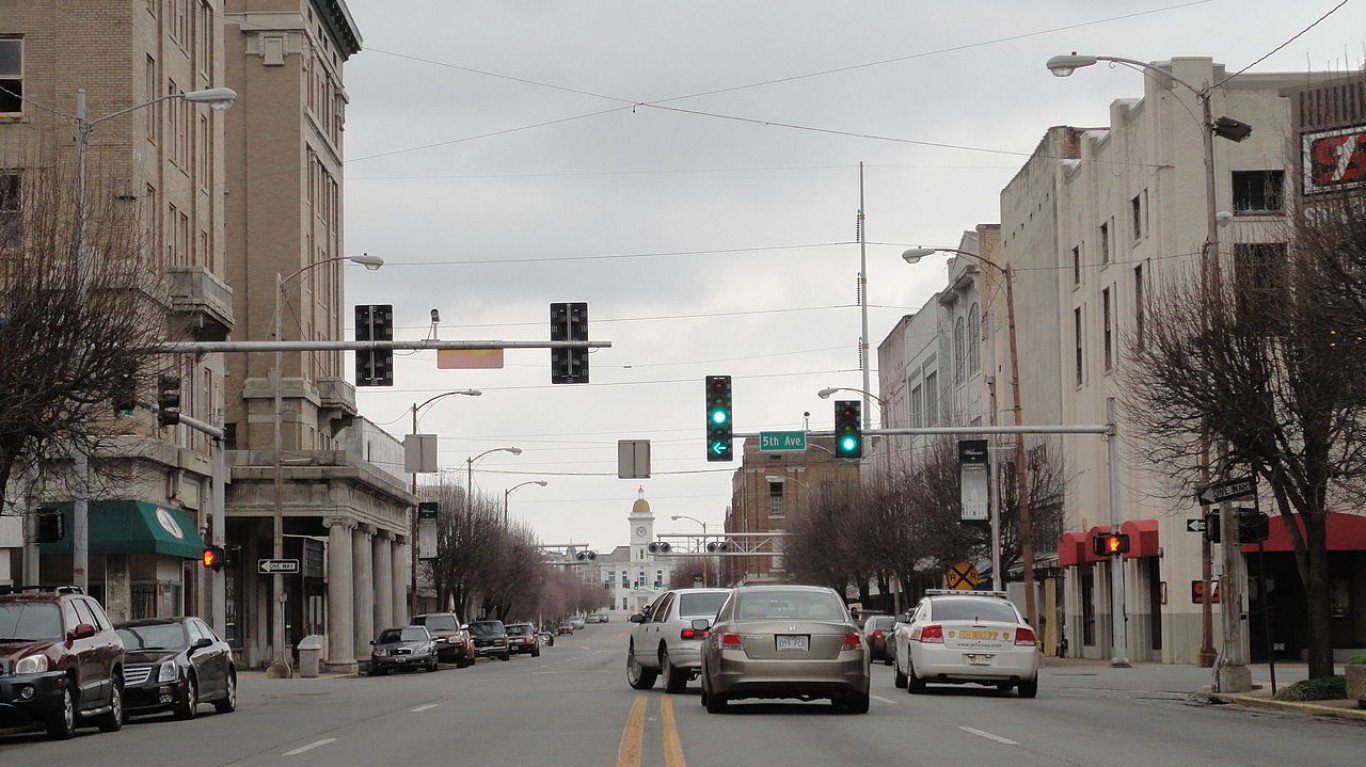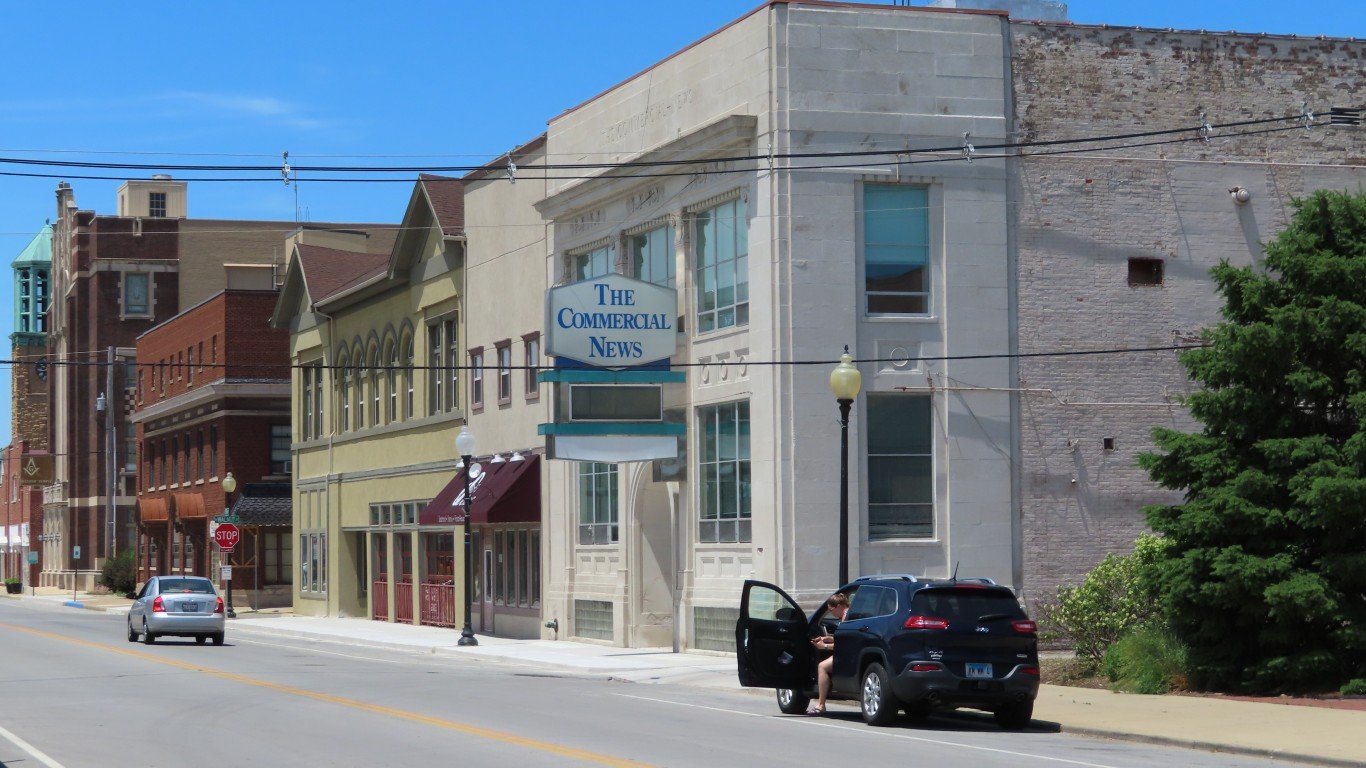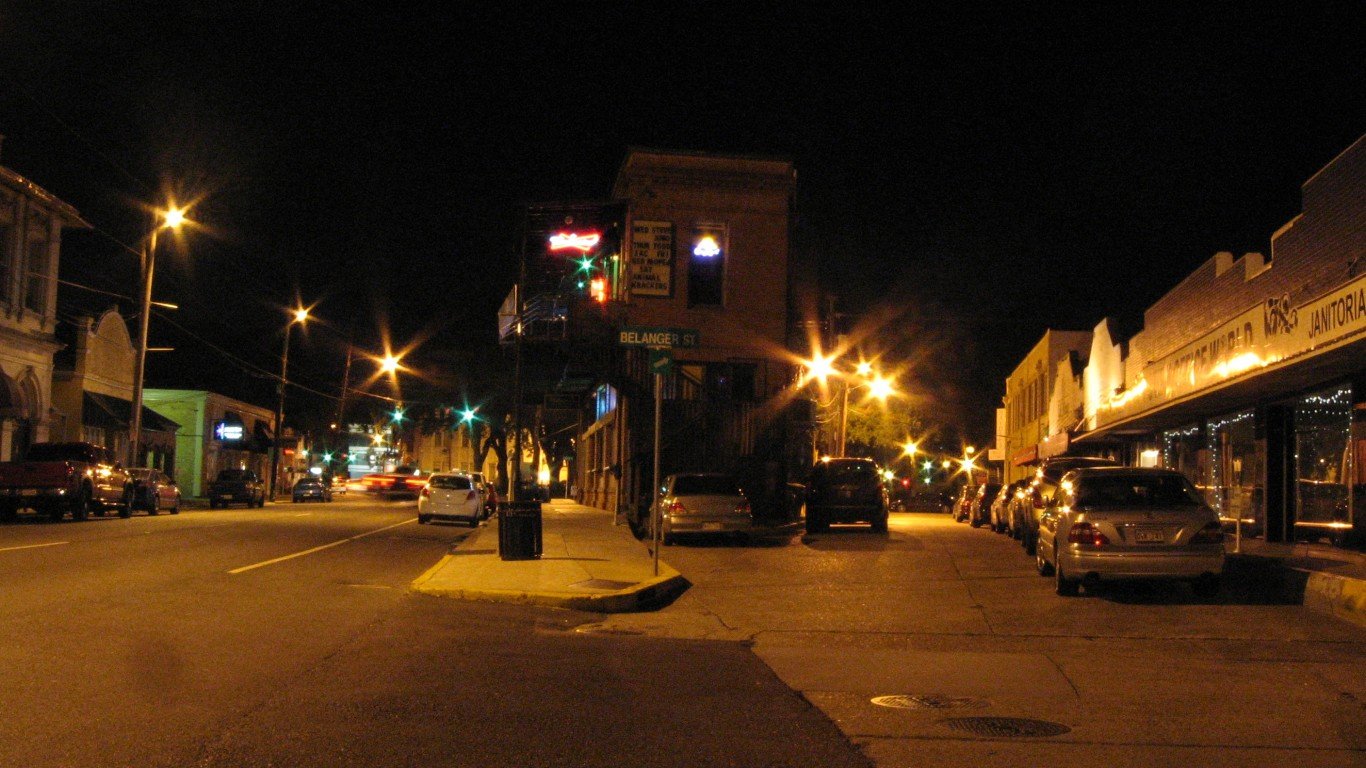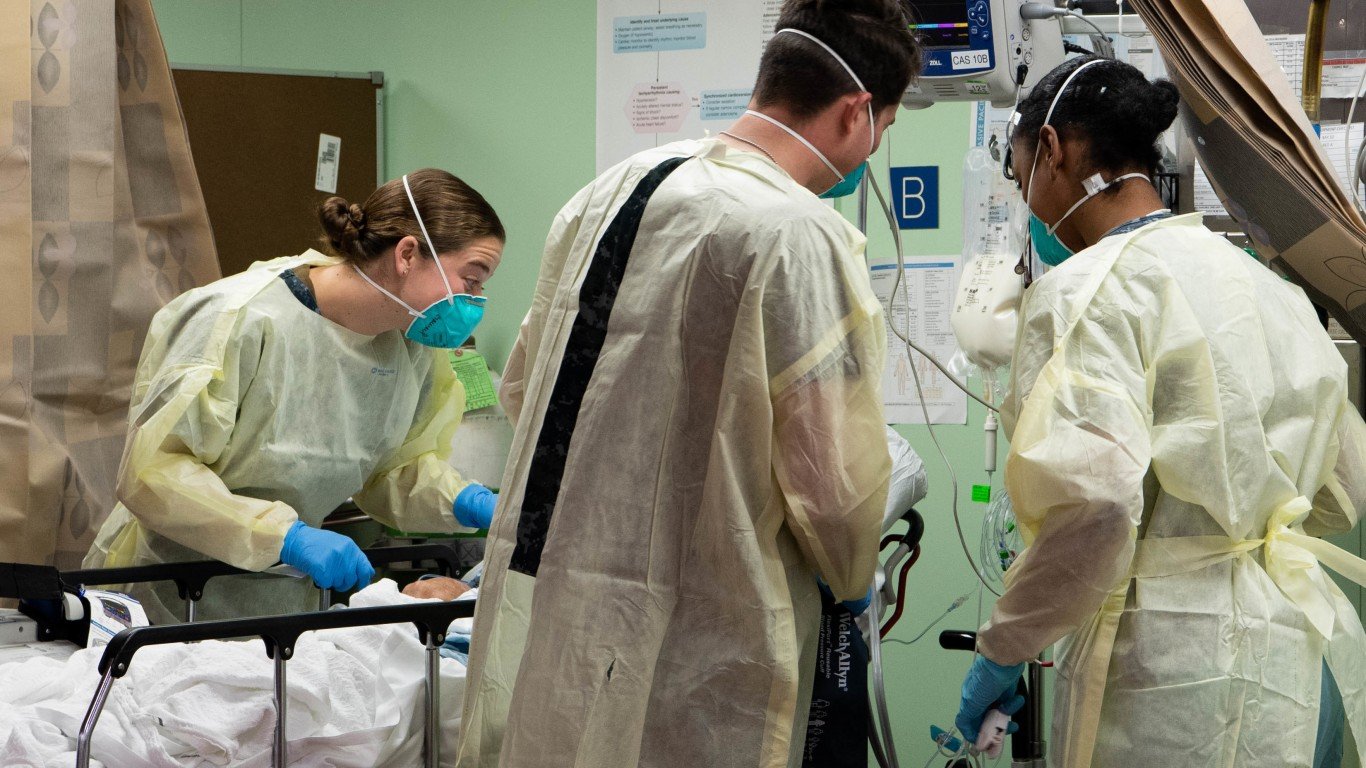

The U.S. has reported more than 33.1 million confirmed COVID-19 cases as of June 17. There have been more than 595,000 reported deaths from COVID-19-related causes — the highest death toll of any country.
The extent of the spread of the novel coronavirus continues to vary considerably from state to state, and from city to city. Even as the number of daily new cases is flattening or even declining in some parts of the country, it is surging at a growing rate in others.
Nationwide, the number of new cases is growing at a steady rate. There were an average of 4.6 daily new coronavirus cases per 100,000 Americans in the week ending June 17, essentially unchanged from the week prior, when there were an average of 5.5 daily new coronavirus cases per 100,000 people.
Metropolitan areas with a high degree of mobility and a large population may be particularly vulnerable to outbreaks. While science and medical professionals are still studying how exactly the virus spreads, experts agree that outbreaks are more likely to occur in group settings where large numbers of people routinely have close contact with one another. Cities with high concentrations of dense spaces such as colleges, correctional facilities, and nursing homes are particularly at risk.
The city with the highest seven-day average of new daily COVID-19 cases per capita is in Texas. In the Laredo, TX, metro area, there were an average of 134.5 daily new coronavirus cases per 100,000 residents in the week ending June 17, the most of any U.S. metro area. Other cities where COVID-19 is growing the fastest include Killeen-Temple, TX; Grand Junction, CO; and Cheyenne, WY.
To determine the metropolitan area in each state where COVID-19 is growing the fastest, 24/7 Wall St. compiled and reviewed data from state and local health departments. We ranked metropolitan areas according to the average number of new daily COVID-19 cases per 100,000 residents in the seven days ending June 17. Data was aggregated from the county level to the metropolitan area level using boundary definitions from the U.S. Census Bureau. Population data used to adjust case and death totals came from the U.S. Census Bureau’s 2019 American Community Survey and are five-year estimates. Unemployment data is from the Bureau of Labor Statistics and is seasonally adjusted.
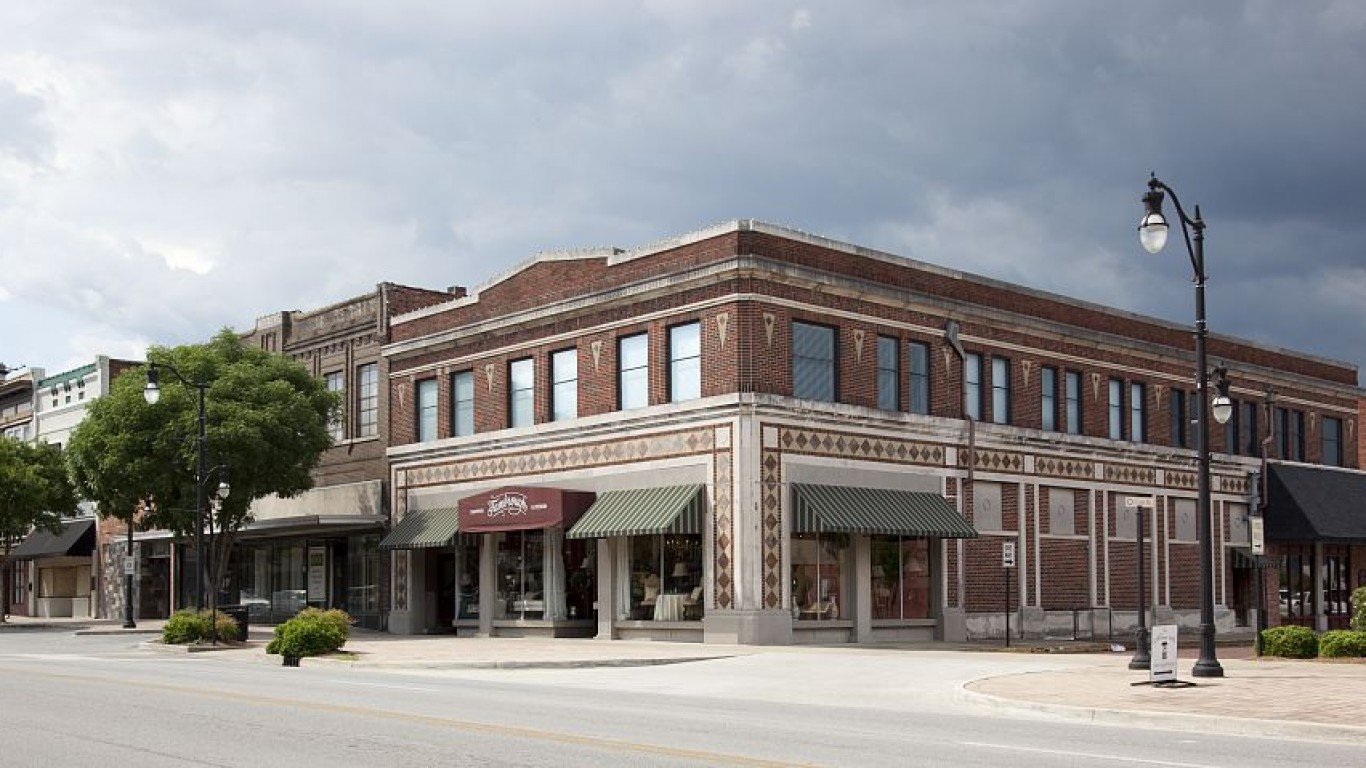
Alabama: Gadsden
Avg. new daily cases in Gadsden in week ending June 17: 9.3 per 100,000
Avg. new daily cases in Gadsden in week ending June 10: 12.8 per 100,000
COVID-19 cases in Gadsden as of June 17: 14,166 (13,787.1 per 100,000)
Peak pandemic unemployment in Gadsden: 19.2% (April 2020)
Gadsden population: 102,748 (192.1 people per sq. mi.)

Alaska: Anchorage
Avg. new daily cases in Anchorage in week ending June 17: 3.5 per 100,000
Avg. new daily cases in Anchorage in week ending June 10: 4.1 per 100,000
COVID-19 cases in Anchorage as of June 17: 42,753 (10,717.7 per 100,000)
Peak pandemic unemployment in Anchorage: 14.8% (April 2020)
Anchorage population: 398,900 (15.2 people per sq. mi.)
These are all the counties in Alaska where COVID-19 is slowing (and where it’s still getting worse).

Arizona: Lake Havasu City-Kingman
Avg. new daily cases in Lake Havasu City in week ending June 17: 9.6 per 100,000
Avg. new daily cases in Lake Havasu City in week ending June 10: 7.7 per 100,000
COVID-19 cases in Lake Havasu City as of June 17: 23,356 (11,245.3 per 100,000)
Peak pandemic unemployment in Lake Havasu City: 19.8% (April 2020)
Lake Havasu City population: 207,695 (15.6 people per sq. mi.)
Arkansas: Pine Bluff
Avg. new daily cases in Pine Bluff in week ending June 17: 10.6 per 100,000
Avg. new daily cases in Pine Bluff in week ending June 10: 7.8 per 100,000
COVID-19 cases in Pine Bluff as of June 17: 13,269 (14,603.0 per 100,000)
Peak pandemic unemployment in Pine Bluff: 10.7% (April 2020)
Pine Bluff population: 90,865 (44.8 people per sq. mi.)

California: Yuba City
Avg. new daily cases in Yuba City in week ending June 17: 13.2 per 100,000
Avg. new daily cases in Yuba City in week ending June 10: 8.4 per 100,000
COVID-19 cases in Yuba City as of June 17: 16,097 (9,333.3 per 100,000)
Peak pandemic unemployment in Yuba City: 16.8% (April 2020)
Yuba City population: 172,469 (139.7 people per sq. mi.)

Colorado: Grand Junction
Avg. new daily cases in Grand Junction in week ending June 17: 33.7 per 100,000
Avg. new daily cases in Grand Junction in week ending June 10: 40.9 per 100,000
COVID-19 cases in Grand Junction as of June 17: 16,527 (10,929.3 per 100,000)
Peak pandemic unemployment in Grand Junction: 12.5% (April 2020)
Grand Junction population: 151,218 (45.4 people per sq. mi.)

Connecticut: New Haven-Milford
Avg. new daily cases in New Haven in week ending June 17: 2.1 per 100,000
Avg. new daily cases in New Haven in week ending June 10: 3.5 per 100,000
COVID-19 cases in New Haven as of June 17: 92,183 (10,750.0 per 100,000)
Peak pandemic unemployment in New Haven: 9.5% (July 2020)
New Haven population: 857,513 (1,418.5 people per sq. mi.)

Delaware: Dover
Avg. new daily cases in Dover in week ending June 17: 2.6 per 100,000
Avg. new daily cases in Dover in week ending June 10: 4.0 per 100,000
COVID-19 cases in Dover as of June 17: 18,184 (10,290.9 per 100,000)
Peak pandemic unemployment in Dover: 17.3% (May 2020)
Dover population: 176,699 (301.4 people per sq. mi.)
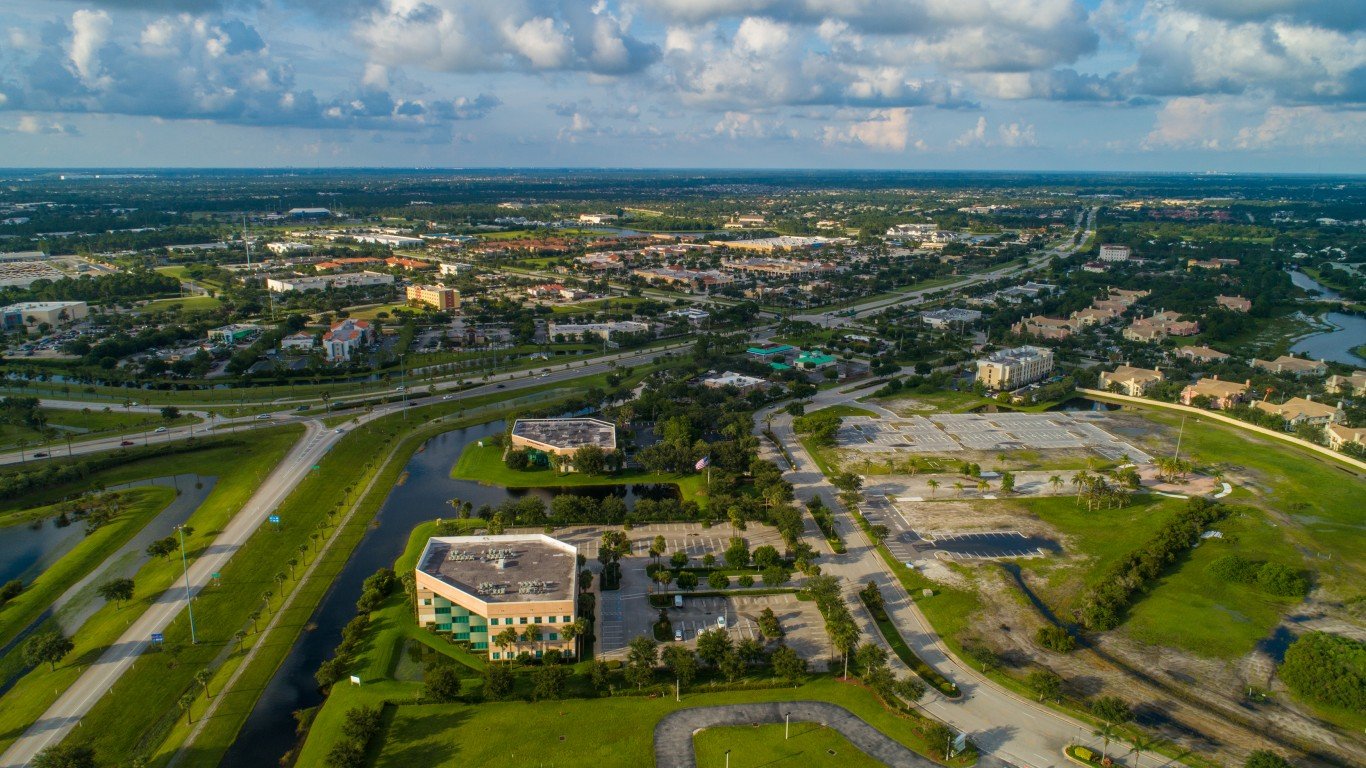
Florida: Port St. Lucie
Avg. new daily cases in Port St. Lucie in week ending June 17: 7.2 per 100,000
Avg. new daily cases in Port St. Lucie in week ending June 10: 9.5 per 100,000
COVID-19 cases in Port St. Lucie as of June 17: 40,672 (8,616.7 per 100,000)
Peak pandemic unemployment in Port St. Lucie: 14.0% (April 2020)
Port St. Lucie population: 472,012 (423.2 people per sq. mi.)

Georgia: Gainesville
Avg. new daily cases in Gainesville in week ending June 17: 10.2 per 100,000
Avg. new daily cases in Gainesville in week ending June 10: 5.9 per 100,000
COVID-19 cases in Gainesville as of June 17: 27,723 (13,954.5 per 100,000)
Peak pandemic unemployment in Gainesville: 10.9% (April 2020)
Gainesville population: 198,667 (505.8 people per sq. mi.)

Hawaii: Kahului-Wailuku-Lahaina
Avg. new daily cases in Kahului in week ending June 17: 7.8 per 100,000
Avg. new daily cases in Kahului in week ending June 10: 5.4 per 100,000
COVID-19 cases in Kahului as of June 17: 4,804 (2,894.3 per 100,000)
Peak pandemic unemployment in Kahului: 34.8% (April 2020)
Kahului population: 165,979 (142.9 people per sq. mi.)
These are all the counties in Hawaii where COVID-19 is slowing (and where it’s still getting worse).
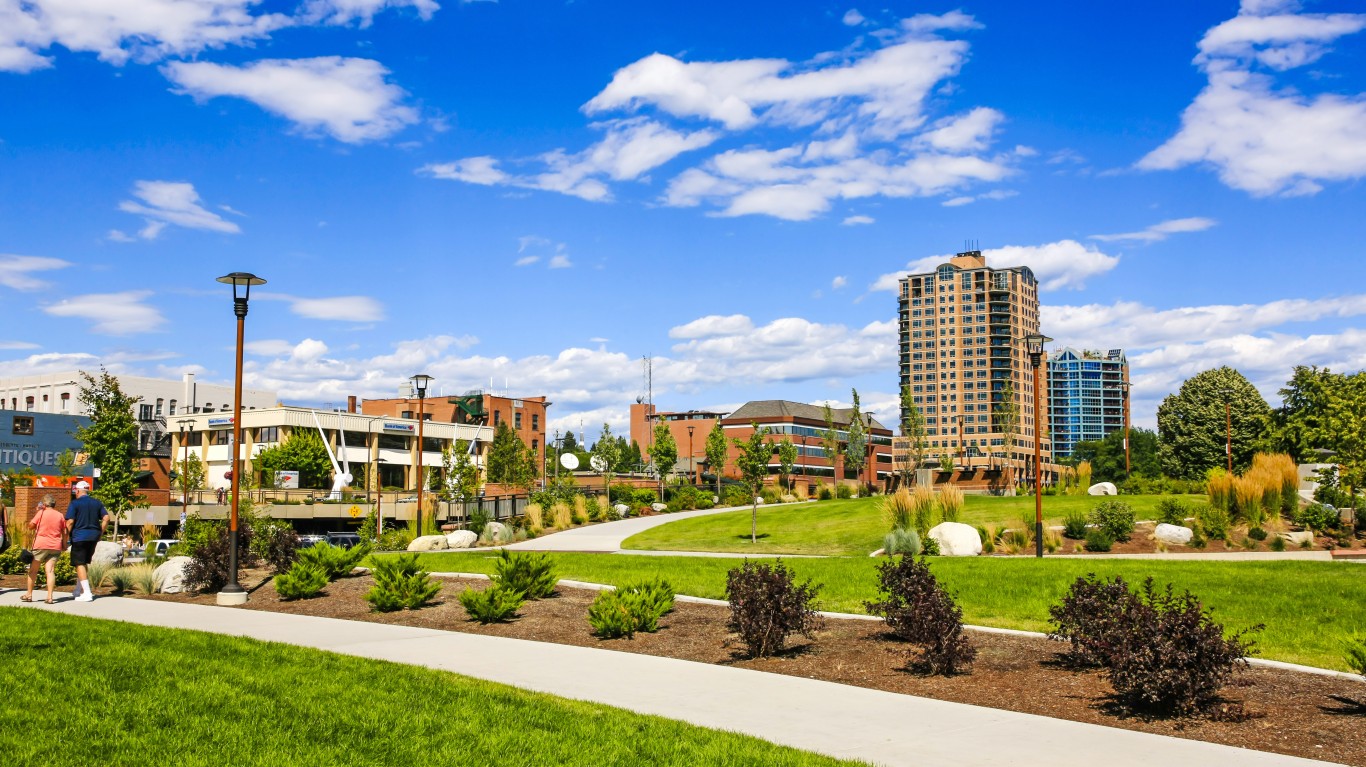
Idaho: Coeur d’Alene
Avg. new daily cases in Coeur d’Alene in week ending June 17: 13.5 per 100,000
Avg. new daily cases in Coeur d’Alene in week ending June 10: 15.6 per 100,000
COVID-19 cases in Coeur d’Alene as of June 17: 18,897 (12,011.7 per 100,000)
Peak pandemic unemployment in Coeur d’Alene: 17.2% (April 2020)
Coeur d’Alene population: 157,322 (126.5 people per sq. mi.)
These are all the counties in Idaho where COVID-19 is slowing (and where it’s still getting worse).
Illinois: Danville
Avg. new daily cases in Danville in week ending June 17: 7.4 per 100,000
Avg. new daily cases in Danville in week ending June 10: 9.6 per 100,000
COVID-19 cases in Danville as of June 17: 10,000 (12,892.7 per 100,000)
Peak pandemic unemployment in Danville: 18.4% (April 2020)
Danville population: 77,563 (86.3 people per sq. mi.)

Indiana: Indianapolis-Carmel-Anderson
Avg. new daily cases in Indianapolis in week ending June 17: 7.8 per 100,000
Avg. new daily cases in Indianapolis in week ending June 10: 10.0 per 100,000
COVID-19 cases in Indianapolis as of June 17: 220,788 (10,879.1 per 100,000)
Peak pandemic unemployment in Indianapolis: 13.8% (April 2020)
Indianapolis population: 2,029,472 (471.3 people per sq. mi.)

Iowa: Waterloo-Cedar Falls
Avg. new daily cases in Waterloo in week ending June 17: 7.6 per 100,000
Avg. new daily cases in Waterloo in week ending June 10: 5.7 per 100,000
COVID-19 cases in Waterloo as of June 17: 20,356 (12,005.5 per 100,000)
Peak pandemic unemployment in Waterloo: 11.6% (April 2020)
Waterloo population: 169,556 (112.8 people per sq. mi.)
These are all the counties in Iowa where COVID-19 is slowing (and where it’s still getting worse).
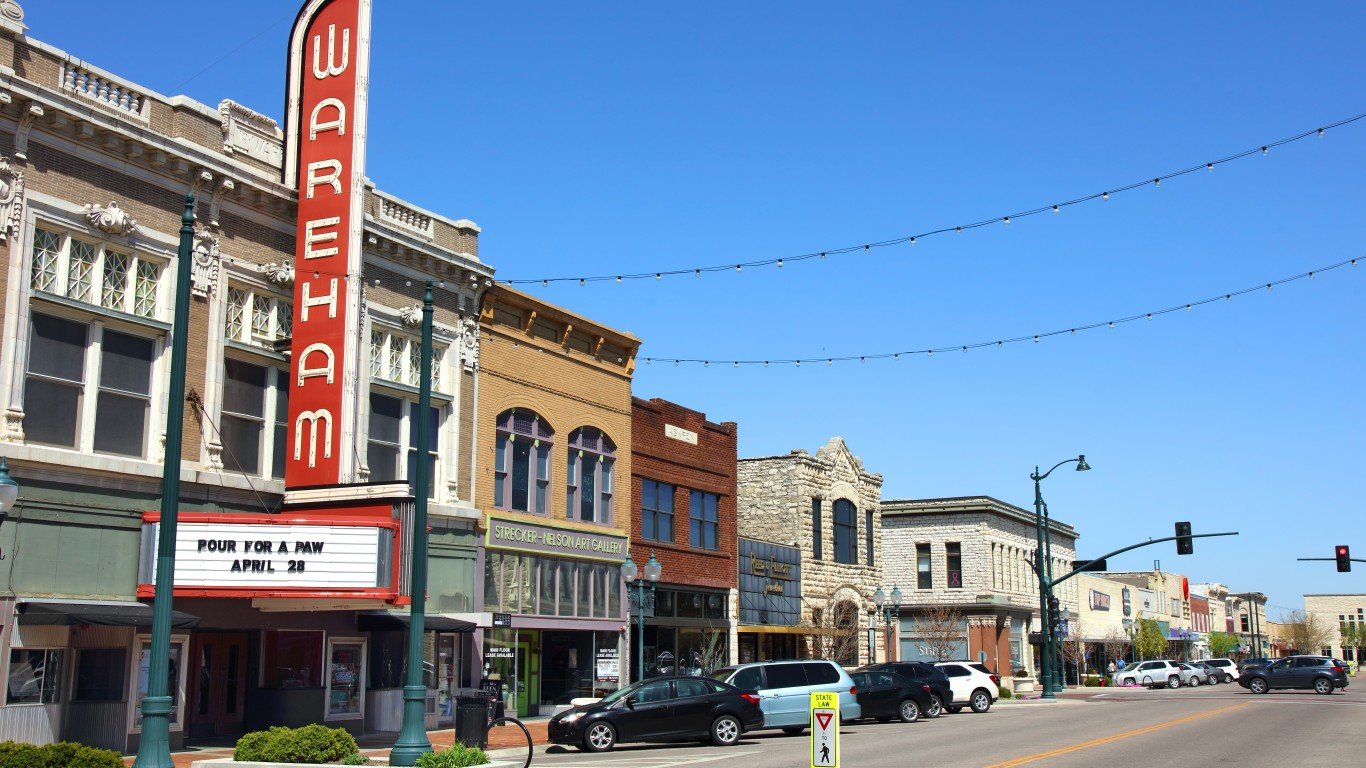
Kansas: Manhattan
Avg. new daily cases in Manhattan in week ending June 17: 8.8 per 100,000
Avg. new daily cases in Manhattan in week ending June 10: 14.0 per 100,000
COVID-19 cases in Manhattan as of June 17: 12,118 (9,116.2 per 100,000)
Peak pandemic unemployment in Manhattan: 9.0% (April 2020)
Manhattan population: 132,928 (72.4 people per sq. mi.)
These are all the counties in Kansas where COVID-19 is slowing (and where it’s still getting worse).
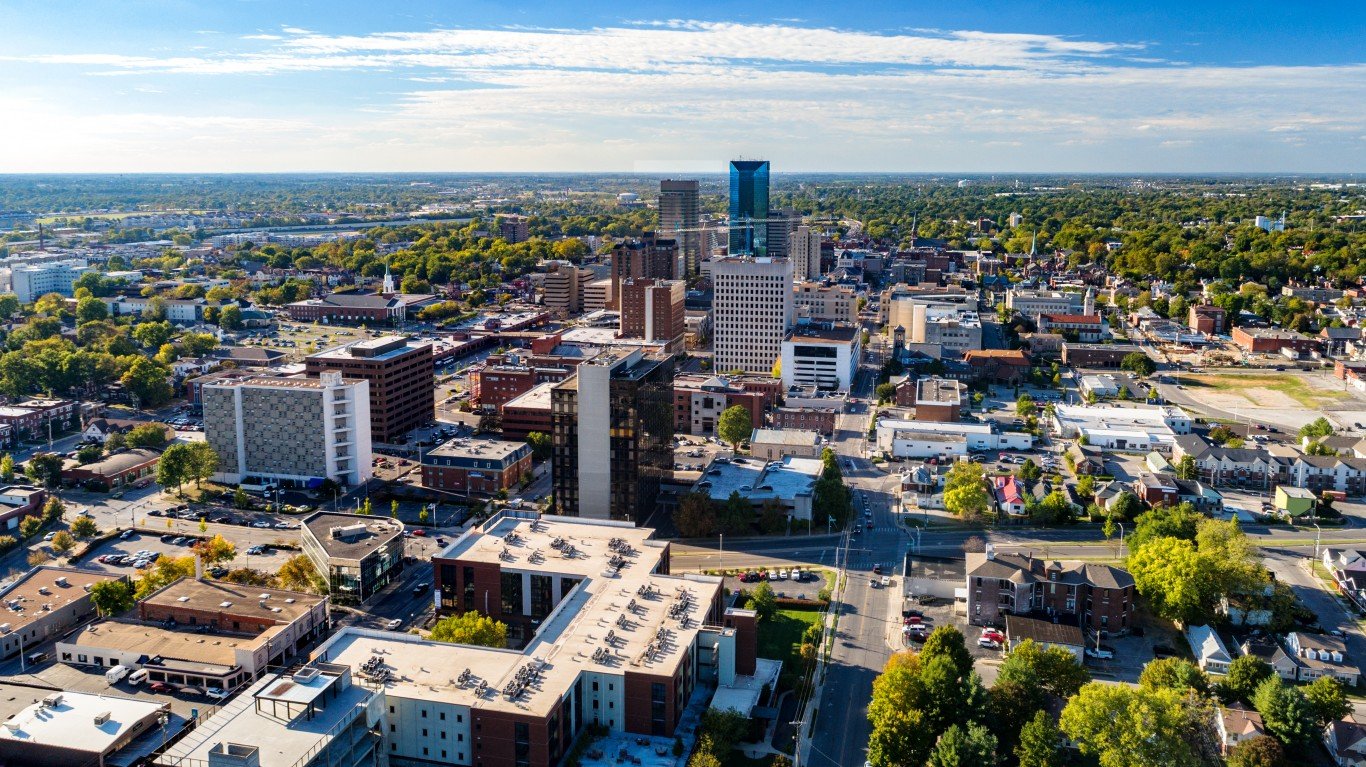
Kentucky: Lexington-Fayette
Avg. new daily cases in Lexington in week ending June 17: 12.1 per 100,000
Avg. new daily cases in Lexington in week ending June 10: 8.4 per 100,000
COVID-19 cases in Lexington as of June 17: 53,604 (10,497.3 per 100,000)
Peak pandemic unemployment in Lexington: 15.8% (April 2020)
Lexington population: 510,647 (347.7 people per sq. mi.)
Louisiana: Houma-Thibodaux
Avg. new daily cases in Houma in week ending June 17: 9.7 per 100,000
Avg. new daily cases in Houma in week ending June 10: 15.8 per 100,000
COVID-19 cases in Houma as of June 17: 20,786 (9,890.5 per 100,000)
Peak pandemic unemployment in Houma: 13.1% (April 2020)
Houma population: 210,162 (91.4 people per sq. mi.)

Maine: Lewiston-Auburn
Avg. new daily cases in Lewiston in week ending June 17: 5.8 per 100,000
Avg. new daily cases in Lewiston in week ending June 10: 9.5 per 100,000
COVID-19 cases in Lewiston as of June 17: 8,369 (7,777.7 per 100,000)
Peak pandemic unemployment in Lewiston: 10.3% (July 2020)
Lewiston population: 107,602 (230.0 people per sq. mi.)
These are all the counties in Maine where COVID-19 is slowing (and where it’s still getting worse).

Maryland: Cumberland, MD-WV
Avg. new daily cases in Cumberland in week ending June 17: 5.6 per 100,000
Avg. new daily cases in Cumberland in week ending June 10: 7.7 per 100,000
COVID-19 cases in Cumberland as of June 17: 10,008 (10,148.9 per 100,000)
Peak pandemic unemployment in Cumberland: 14.0% (April 2020)
Cumberland population: 98,612 (131.1 people per sq. mi.)

Massachusetts: Worcester, MA-CT
Avg. new daily cases in Worcester in week ending June 17: 2.6 per 100,000
Avg. new daily cases in Worcester in week ending June 10: 2.3 per 100,000
COVID-19 cases in Worcester as of June 17: 88,223 (9,372.1 per 100,000)
Peak pandemic unemployment in Worcester: 15.9% (June 2020)
Worcester population: 941,338 (465.2 people per sq. mi.)
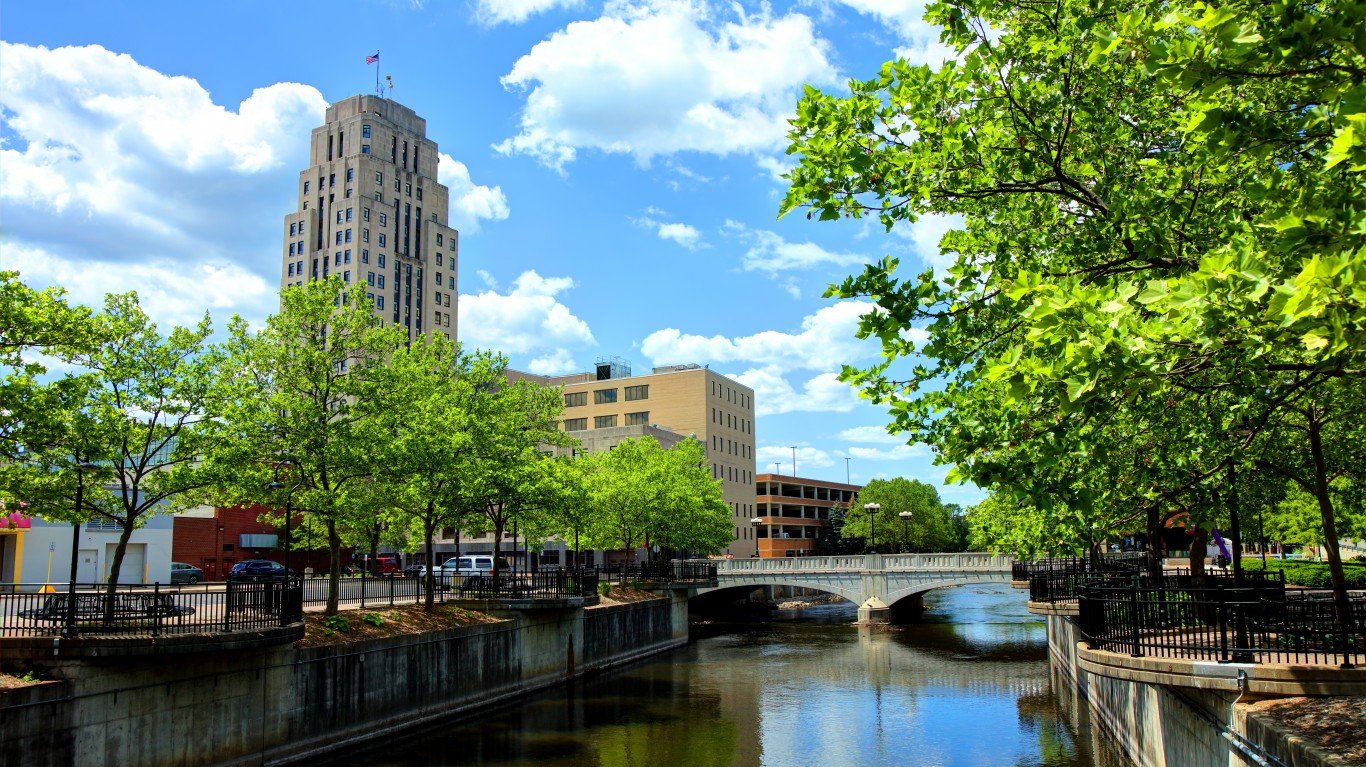
Michigan: Battle Creek
Avg. new daily cases in Battle Creek in week ending June 17: 5.2 per 100,000
Avg. new daily cases in Battle Creek in week ending June 10: 8.4 per 100,000
COVID-19 cases in Battle Creek as of June 17: 14,518 (10,817.2 per 100,000)
Peak pandemic unemployment in Battle Creek: 25.6% (April 2020)
Battle Creek population: 134,212 (190.0 people per sq. mi.)

Minnesota: Duluth, MN-WI
Avg. new daily cases in Duluth in week ending June 17: 3.5 per 100,000
Avg. new daily cases in Duluth in week ending June 10: 5.5 per 100,000
COVID-19 cases in Duluth as of June 17: 27,483 (9,501.6 per 100,000)
Peak pandemic unemployment in Duluth: 12.9% (May 2020)
Duluth population: 289,247 (27.5 people per sq. mi.)
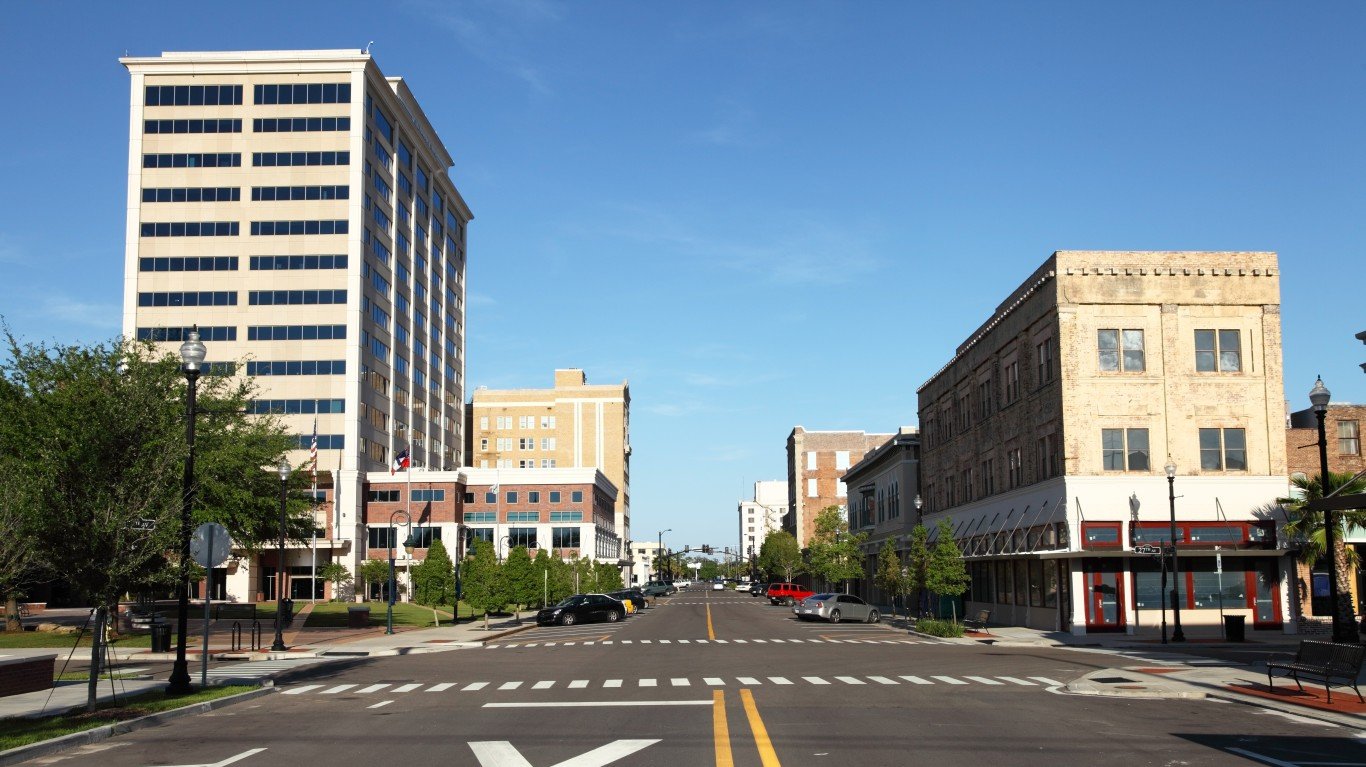
Mississippi: Gulfport-Biloxi
Avg. new daily cases in Gulfport in week ending June 17: 6.3 per 100,000
Avg. new daily cases in Gulfport in week ending June 10: 6.1 per 100,000
COVID-19 cases in Gulfport as of June 17: 37,798 (9,171.7 per 100,000)
Peak pandemic unemployment in Gulfport: 22.3% (April 2020)
Gulfport population: 412,115 (186.0 people per sq. mi.)

Missouri: Springfield
Avg. new daily cases in Springfield in week ending June 17: 23.7 per 100,000
Avg. new daily cases in Springfield in week ending June 10: 18.8 per 100,000
COVID-19 cases in Springfield as of June 17: 47,361 (10,241.7 per 100,000)
Peak pandemic unemployment in Springfield: 9.7% (April 2020)
Springfield population: 462,434 (153.8 people per sq. mi.)

Montana: Great Falls
Avg. new daily cases in Great Falls in week ending June 17: 10.5 per 100,000
Avg. new daily cases in Great Falls in week ending June 10: 15.7 per 100,000
COVID-19 cases in Great Falls as of June 17: 9,393 (11,507.5 per 100,000)
Peak pandemic unemployment in Great Falls: 12.6% (April 2020)
Great Falls population: 81,625 (30.3 people per sq. mi.)

Nebraska: Omaha-Council Bluffs, NE-IA
Avg. new daily cases in Omaha in week ending June 17: 0.3 per 100,000
Avg. new daily cases in Omaha in week ending June 10: 0.3 per 100,000
COVID-19 cases in Omaha as of June 17: 116,669 (12,521.1 per 100,000)
Peak pandemic unemployment in Omaha: 10.2% (April 2020)
Omaha population: 931,779 (214.2 people per sq. mi.)

Nevada: Las Vegas-Henderson-Paradise
Avg. new daily cases in Las Vegas in week ending June 17: 10.1 per 100,000
Avg. new daily cases in Las Vegas in week ending June 10: 10.6 per 100,000
COVID-19 cases in Las Vegas as of June 17: 254,583 (11,667.4 per 100,000)
Peak pandemic unemployment in Las Vegas: 34.2% (April 2020)
Las Vegas population: 2,182,004 (276.5 people per sq. mi.)
These are all the counties in Nevada where COVID-19 is slowing (and where it’s still getting worse).
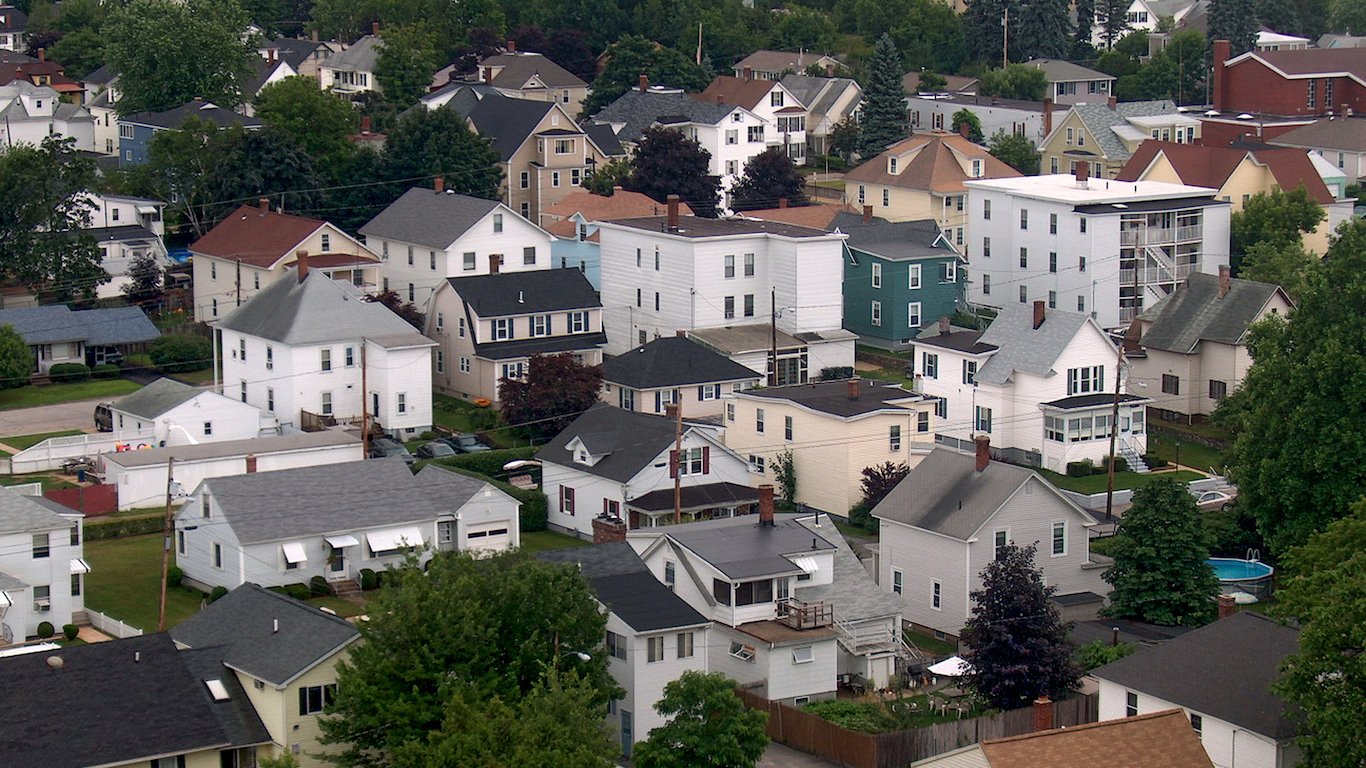
New Hampshire: Manchester-Nashua
Avg. new daily cases in Manchester in week ending June 17: 2.6 per 100,000
Avg. new daily cases in Manchester in week ending June 10: 3.8 per 100,000
COVID-19 cases in Manchester as of June 17: 36,325 (8,794.7 per 100,000)
Peak pandemic unemployment in Manchester: 17.5% (April 2020)
Manchester population: 413,035 (471.4 people per sq. mi.)
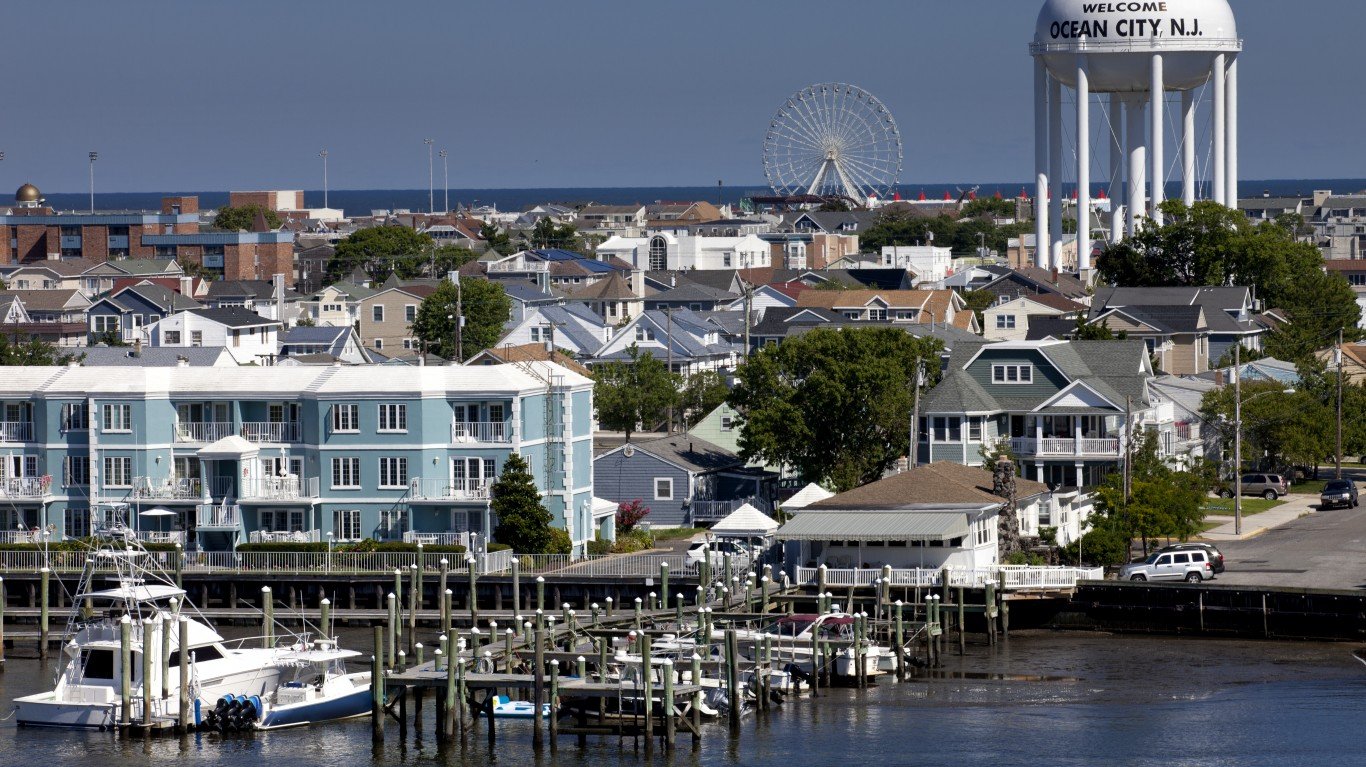
New Jersey: Ocean City
Avg. new daily cases in Ocean City in week ending June 17: 3.5 per 100,000
Avg. new daily cases in Ocean City in week ending June 10: 4.5 per 100,000
COVID-19 cases in Ocean City as of June 17: 9,224 (9,909.1 per 100,000)
Peak pandemic unemployment in Ocean City: 26.6% (June 2020)
Ocean City population: 93,086 (370.2 people per sq. mi.)

New Mexico: Farmington
Avg. new daily cases in Farmington in week ending June 17: 8.1 per 100,000
Avg. new daily cases in Farmington in week ending June 10: 12.7 per 100,000
COVID-19 cases in Farmington as of June 17: 15,620 (12,346.4 per 100,000)
Peak pandemic unemployment in Farmington: 14.5% (July 2020)
Farmington population: 126,515 (22.9 people per sq. mi.)
New York: Watertown-Fort Drum
Avg. new daily cases in Watertown in week ending June 17: 4.0 per 100,000
Avg. new daily cases in Watertown in week ending June 10: 4.6 per 100,000
COVID-19 cases in Watertown as of June 17: 6,136 (5,437.7 per 100,000)
Peak pandemic unemployment in Watertown: 17.1% (April 2020)
Watertown population: 112,842 (89.0 people per sq. mi.)

North Carolina: Jacksonville
Avg. new daily cases in Jacksonville in week ending June 17: 8.6 per 100,000
Avg. new daily cases in Jacksonville in week ending June 10: 8.6 per 100,000
COVID-19 cases in Jacksonville as of June 17: 17,715 (9,081.4 per 100,000)
Peak pandemic unemployment in Jacksonville: 12.6% (April 2020)
Jacksonville population: 195,069 (255.7 people per sq. mi.)
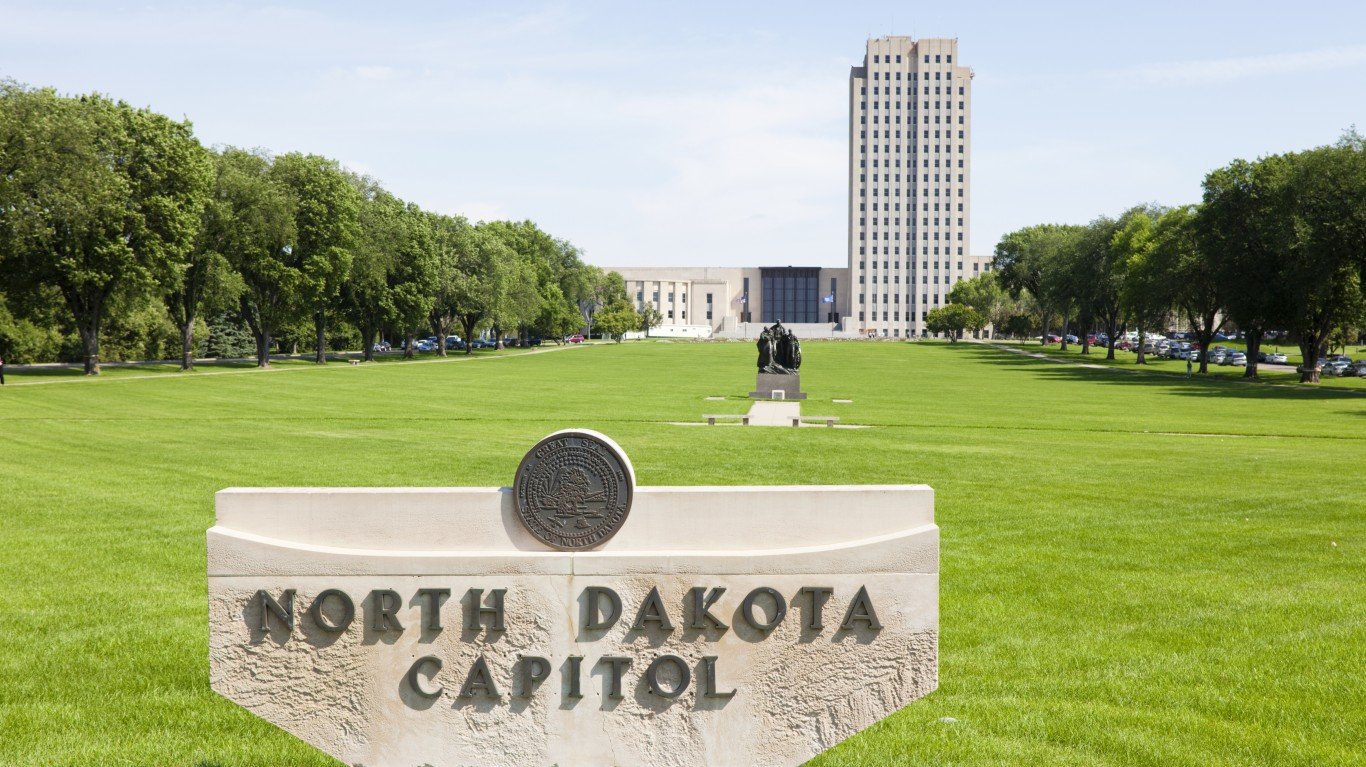
North Dakota: Bismarck
Avg. new daily cases in Bismarck in week ending June 17: 6.7 per 100,000
Avg. new daily cases in Bismarck in week ending June 10: 7.7 per 100,000
COVID-19 cases in Bismarck as of June 17: 21,501 (16,863.1 per 100,000)
Peak pandemic unemployment in Bismarck: 9.5% (April 2020)
Bismarck population: 127,503 (29.8 people per sq. mi.)

Ohio: Youngstown-Warren-Boardman, OH-PA
Avg. new daily cases in Youngstown in week ending June 17: 4.0 per 100,000
Avg. new daily cases in Youngstown in week ending June 10: 7.4 per 100,000
COVID-19 cases in Youngstown as of June 17: 48,552 (8,960.5 per 100,000)
Peak pandemic unemployment in Youngstown: 20.4% (April 2020)
Youngstown population: 541,846 (318.3 people per sq. mi.)
These are all the counties in Ohio where COVID-19 is slowing (and where it’s still getting worse).

Oklahoma: Lawton
Avg. new daily cases in Lawton in week ending June 17: 6.0 per 100,000
Avg. new daily cases in Lawton in week ending June 10: 7.6 per 100,000
COVID-19 cases in Lawton as of June 17: 14,712 (11,528.0 per 100,000)
Peak pandemic unemployment in Lawton: 19.5% (April 2020)
Lawton population: 127,620 (75.0 people per sq. mi.)

Oregon: Bend
Avg. new daily cases in Bend in week ending June 17: 11.0 per 100,000
Avg. new daily cases in Bend in week ending June 10: 12.9 per 100,000
COVID-19 cases in Bend as of June 17: 9,948 (5,341.2 per 100,000)
Peak pandemic unemployment in Bend: 18.3% (April 2020)
Bend population: 186,251 (61.7 people per sq. mi.)
These are all the counties in Oregon where COVID-19 is slowing (and where it’s still getting worse).

Pennsylvania: York-Hanover
Avg. new daily cases in York in week ending June 17: 9.3 per 100,000
Avg. new daily cases in York in week ending June 10: 8.8 per 100,000
COVID-19 cases in York as of June 17: 46,884 (10,522.4 per 100,000)
Peak pandemic unemployment in York: 15.3% (April 2020)
York population: 445,565 (492.8 people per sq. mi.)

Rhode Island: Providence-Warwick, RI-MA
Avg. new daily cases in Providence in week ending June 17: 4.3 per 100,000
Avg. new daily cases in Providence in week ending June 10: 3.4 per 100,000
COVID-19 cases in Providence as of June 17: 206,982 (12,790.3 per 100,000)
Peak pandemic unemployment in Providence: 18.5% (April 2020)
Providence population: 1,618,268 (1,019.8 people per sq. mi.)

South Carolina: Myrtle Beach-Conway-North Myrtle Beach, SC-NC
Avg. new daily cases in Myrtle Beach in week ending June 17: 3.8 per 100,000
Avg. new daily cases in Myrtle Beach in week ending June 10: 5.3 per 100,000
COVID-19 cases in Myrtle Beach as of June 17: 48,824 (10,522.7 per 100,000)
Peak pandemic unemployment in Myrtle Beach: 22.0% (April 2020)
Myrtle Beach population: 463,987 (234.2 people per sq. mi.)
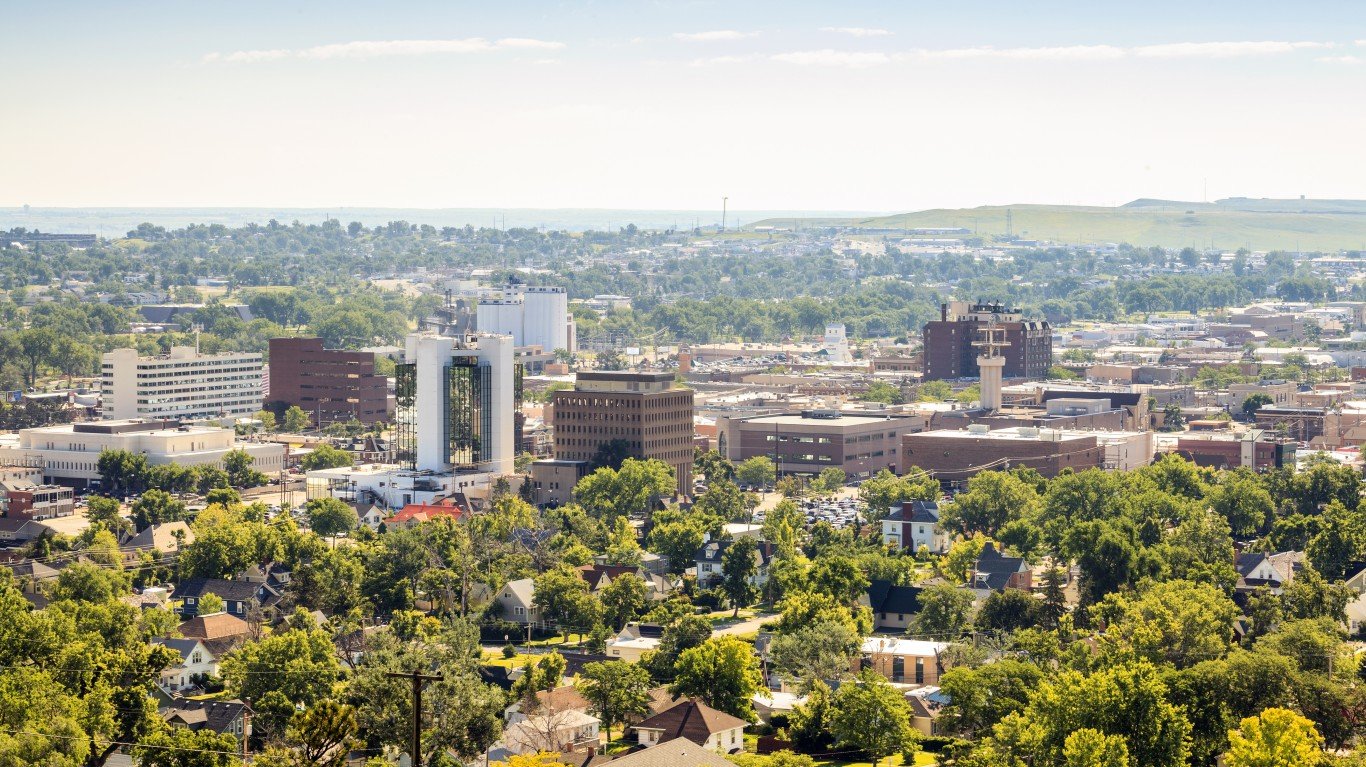
South Dakota: Rapid City
Avg. new daily cases in Rapid City in week ending June 17: 2.7 per 100,000
Avg. new daily cases in Rapid City in week ending June 10: 3.7 per 100,000
COVID-19 cases in Rapid City as of June 17: 16,676 (12,049.0 per 100,000)
Peak pandemic unemployment in Rapid City: 13.8% (April 2020)
Rapid City population: 138,402 (22.2 people per sq. mi.)

Tennessee: Jackson
Avg. new daily cases in Jackson in week ending June 17: 11.2 per 100,000
Avg. new daily cases in Jackson in week ending June 10: 5.9 per 100,000
COVID-19 cases in Jackson as of June 17: 22,492 (12,604.7 per 100,000)
Peak pandemic unemployment in Jackson: 14.0% (April 2020)
Jackson population: 178,442 (104.3 people per sq. mi.)

Texas: Laredo
Avg. new daily cases in Laredo in week ending June 17: 134.5 per 100,000
Avg. new daily cases in Laredo in week ending June 10: – per 100,000
COVID-19 cases in Laredo as of June 17: 46,724 (17,082.1 per 100,000)
Peak pandemic unemployment in Laredo: 14.3% (May 2020)
Laredo population: 273,526 (81.4 people per sq. mi.)
These are all the counties in Texas where COVID-19 is slowing (and where it’s still getting worse).

Utah: Ogden-Clearfield
Avg. new daily cases in Ogden in week ending June 17: 11.0 per 100,000
Avg. new daily cases in Ogden in week ending June 10: 10.8 per 100,000
COVID-19 cases in Ogden as of June 17: 76,152 (11,488.1 per 100,000)
Peak pandemic unemployment in Ogden: 9.8% (April 2020)
Ogden population: 662,875 (91.7 people per sq. mi.)
These are all the counties in Utah where COVID-19 is slowing (and where it’s still getting worse).

Vermont: Burlington-South Burlington
Avg. new daily cases in Burlington in week ending June 17: 0.9 per 100,000
Avg. new daily cases in Burlington in week ending June 10: 0.6 per 100,000
COVID-19 cases in Burlington as of June 17: 9,764 (4,462.8 per 100,000)
Peak pandemic unemployment in Burlington: 14.8% (April 2020)
Burlington population: 218,784 (174.7 people per sq. mi.)

Virginia: Roanoke
Avg. new daily cases in Roanoke in week ending June 17: 5.1 per 100,000
Avg. new daily cases in Roanoke in week ending June 10: 3.7 per 100,000
COVID-19 cases in Roanoke as of June 17: 26,160 (8,357.6 per 100,000)
Peak pandemic unemployment in Roanoke: 10.9% (April 2020)
Roanoke population: 313,009 (167.5 people per sq. mi.)

Washington: Longview
Avg. new daily cases in Longview in week ending June 17: 15.0 per 100,000
Avg. new daily cases in Longview in week ending June 10: 17.5 per 100,000
COVID-19 cases in Longview as of June 17: 6,456 (6,046.2 per 100,000)
Peak pandemic unemployment in Longview: 16.5% (April 2020)
Longview population: 106,778 (93.7 people per sq. mi.)

West Virginia: Beckley
Avg. new daily cases in Beckley in week ending June 17: 5.1 per 100,000
Avg. new daily cases in Beckley in week ending June 10: 6.5 per 100,000
COVID-19 cases in Beckley as of June 17: 10,587 (8,909.5 per 100,000)
Peak pandemic unemployment in Beckley: 18.4% (April 2020)
Beckley population: 118,828 (93.8 people per sq. mi.)

Wisconsin: Fond du Lac
Avg. new daily cases in Fond du Lac in week ending June 17: 4.6 per 100,000
Avg. new daily cases in Fond du Lac in week ending June 10: 3.8 per 100,000
COVID-19 cases in Fond du Lac as of June 17: 13,857 (13,506.2 per 100,000)
Peak pandemic unemployment in Fond du Lac: 15.4% (April 2020)
Fond du Lac population: 102,597 (142.6 people per sq. mi.)
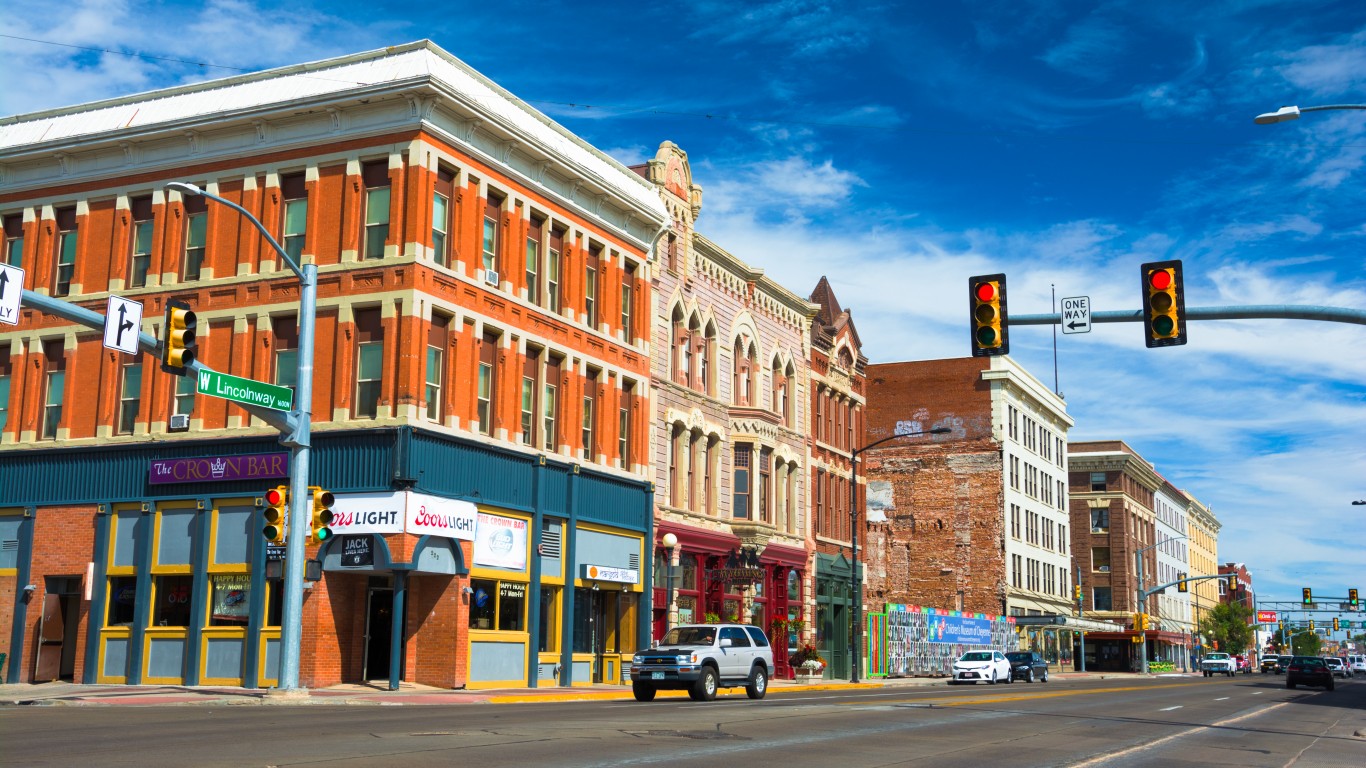
Wyoming: Cheyenne
Avg. new daily cases in Cheyenne in week ending June 17: 27.2 per 100,000
Avg. new daily cases in Cheyenne in week ending June 10: 22.9 per 100,000
COVID-19 cases in Cheyenne as of June 17: 9,973 (10,143.4 per 100,000)
Peak pandemic unemployment in Cheyenne: 9.2% (April 2020)
Cheyenne population: 98,320 (36.6 people per sq. mi.)
Click here to see all coronavirus data for every state.
Sponsored: Find a Qualified Financial Advisor
Finding a qualified financial advisor doesn’t have to be hard. SmartAsset’s free tool matches you with up to 3 fiduciary financial advisors in your area in 5 minutes. Each advisor has been vetted by SmartAsset and is held to a fiduciary standard to act in your best interests. If you’re ready to be matched with local advisors that can help you achieve your financial goals, get started now.
Thank you for reading! Have some feedback for us?
Contact the 24/7 Wall St. editorial team.
